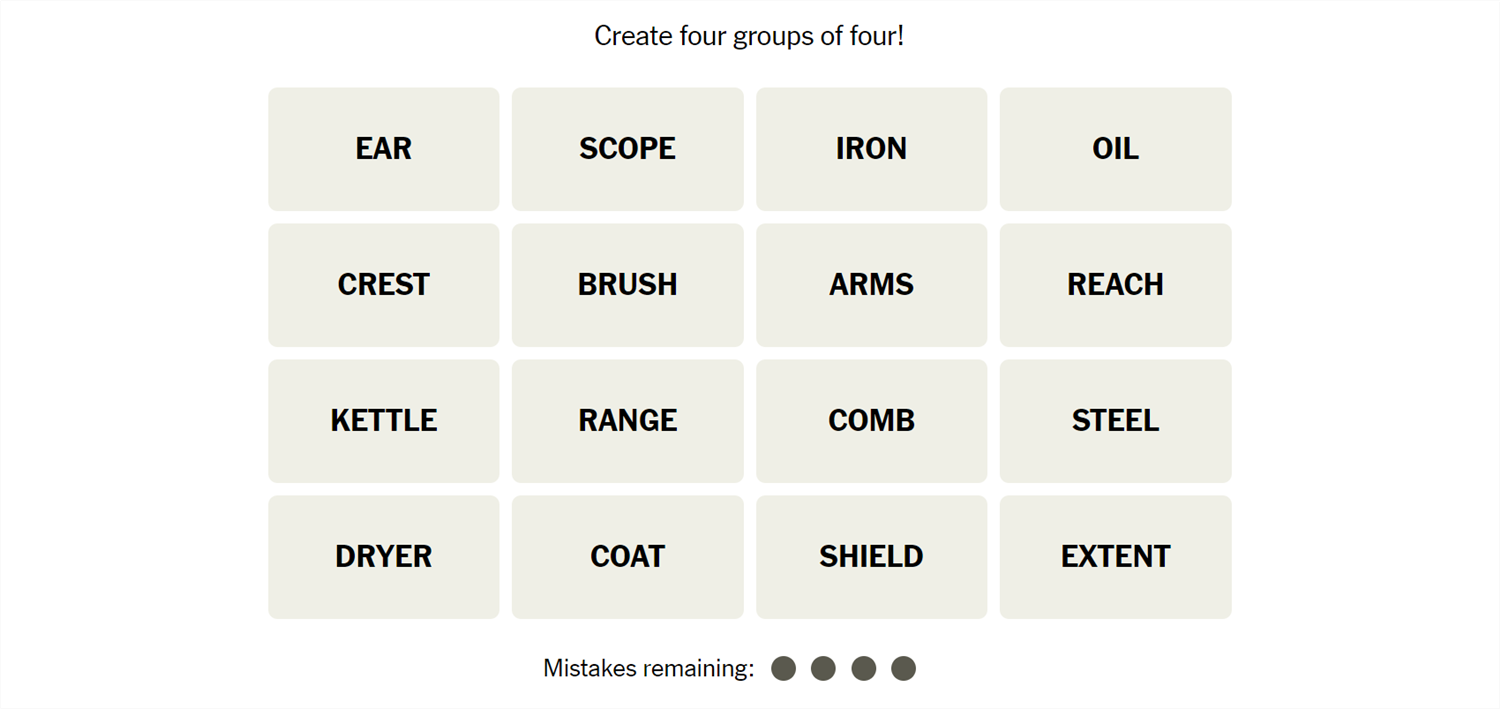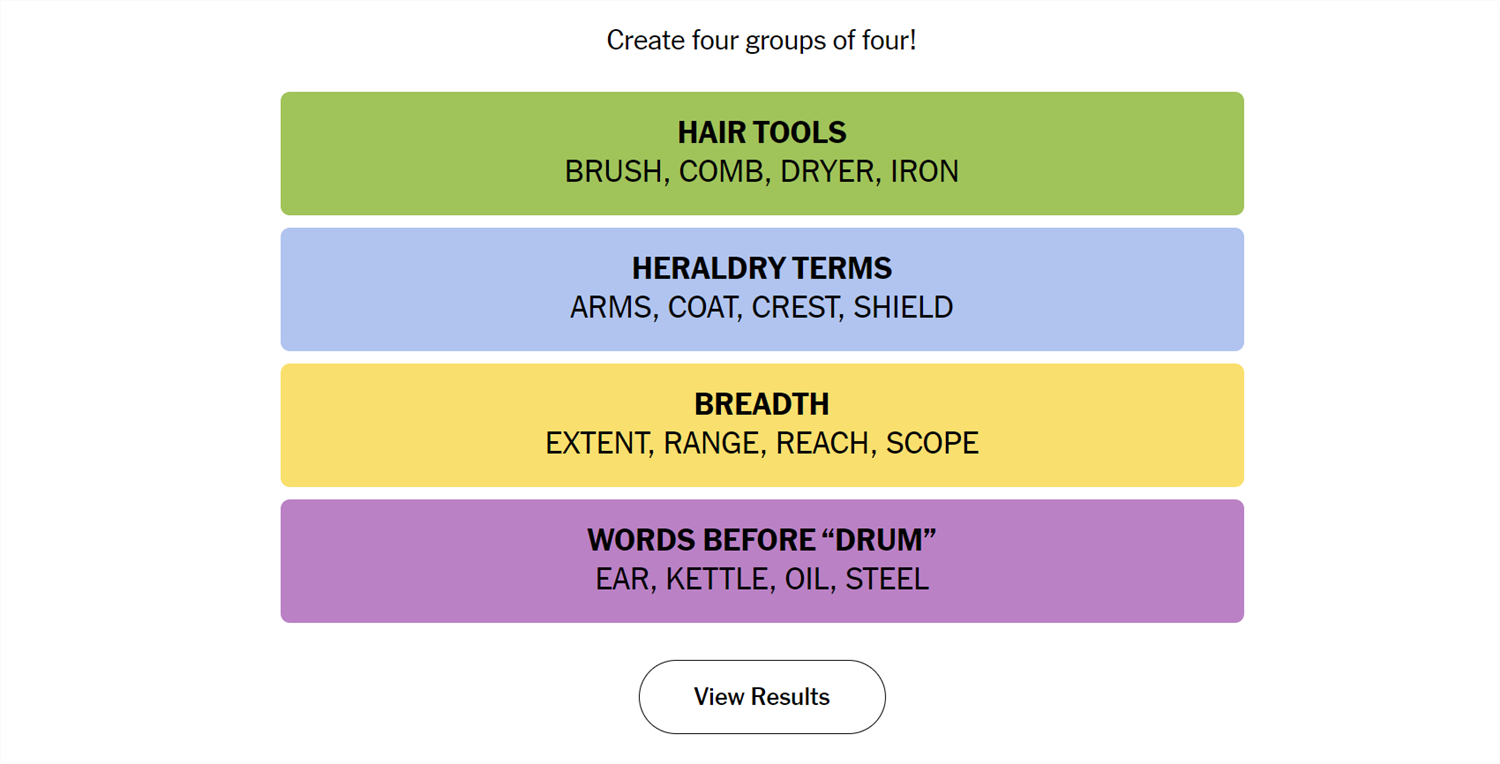Connections is a game from the New York Times that challenges you to find the association between words. It sounds easy, but it isn’t—Connections categories can be almost anything, and they’re usually quite specific. If you need a hand getting the answers, we’ve got you covered.
What Is Connections?
Connections is a game from the New York Times. The objective is simple: sort 16 words into groups of 4. Each group of words will be connected by some common idea or theme. That common element could be anything. We have seen everything from games that rely on the number of letters in the words to categories that require you to spot an extra letter at the end of the word. Sometimes they’re references to economics, other times they reference fairy tales. There is no telling what sort of association there will be between words.
Once you’re confident you understand the connection, select 4 words, then hit “Submit.” You have only four attempts in total, so don’t be too guess-happy.
Hints for Today’s Connections Categories
Here are a few small hints for the 303rd Connections game to get you started:
- Yellow: Limit
- Green: Key to being stylish
- Blue: Flags
- Purple: A percussion instrument.
What Are Today’s Connections Categories?
If you still need help, the actual categories are:
- Yellow: Breadth
- Green: Hair Tools
- Blue: Heraldry Terms
- Purple: Words Before Drum
Today’s NYT Connections Answers
Breadth (Yellow):
Brush, Comb, Dryer, Iron
Hair Tools (Green):
Arms, Coat, Crest, Shield
Heraldry Terms (Blue):
Extent, Range, Reach, Scope
Words Before Drum (Purple):
Ear, Kettle, Oil, Steel
How Did We Solve This Connections Game?
April 9th wasn’t too bad, though we did have a few false starts. Kettle, range, and oil immediately had us thinking about things on top of a stove and cooking, but there wasn’t a good fourth word to tie things together.
Brush and comb were more fruitful, and had us thinking about things you use to style your hair. You can use a dryer on your hair, and you can also use an iron. We guessed those four and completed Glue, “Hair Tools.”
Shuffling the board put arms, coat, and crest together, which made us instantly think of medieval heraldry. Of the words on the board, only shield really matched that idea, and we figured we’d try it. Our guess was right on the money: Blue was “Heraldry Terms.”
We shuffled again, and this time range, extent, scope, and reach wound up in a 2×2 grid together, and it was immediately evident that they could be synonyms in the right context. They all generally mean “the limit.” Connections went with “Breadth” instead of “Limit,” but close enough for us.
“Breadth” was Yellow, and that just left us with Purple.
Ear, kettle, oil, steel. Kettlebell? Maybe, but nothing else really works with bell stuck on the end. Ear drum? Drum fits with all the remaining words. The category was actually “Words Before Drum.” We didn’t even really need to figure out the connection since they were the last four words, but we enjoyed the practice.
How Do You Guess Connections Categories?
There is no quick, reliable way to approach Connections like there is with Wordle, since Connections isn’t algorithmic. However, there are a few things to keep in mind that can help.
- Look for similar parts of speech. Are some words verbs and others nouns? Are some adjectives? Try mentally grouping them based on those categories and see if any other patterns jump out at you.
- Are the words synonyms? Sometimes categories will just be synonyms for a phrase, or very close to synonyms. Don’t rely too closely on this, though. Occasionally, Connections will deliberately throw in words that are sometimes synonyms to mislead you.
- Try saying the words. Sometimes, saying the words helps. One puzzle we saw included the words go, rate, faster, clip, pace, speed, move, commute, and hurry—all of which are obviously related to the idea of motion. However, when you say them, it becomes a little more obvious that only four (go, move, hurry, faster) are things you’d actually say to prompt someone to get moving.
- Expect the red herring. Connections usually has words that could be plausibly, yet incorrectly, grouped together. Take the words Bud, Corona, and Light, as an example. You might instinctively see those three words together and assume they’re lumped together in a category related to beer—but they weren’t.
- Look for distinct words. If a word on your board doesn’t have multiple meanings or can really only be used in one context, try using that word as the basis for a category.
- Shuffle the board. Sometimes, moving words around will help you look at them in new ways.
If you didn’t solve this one, don’t feel too bad—there’s always tomorrow! And those words may align with a topic you’re interested in, giving you a leg up on the competition.



